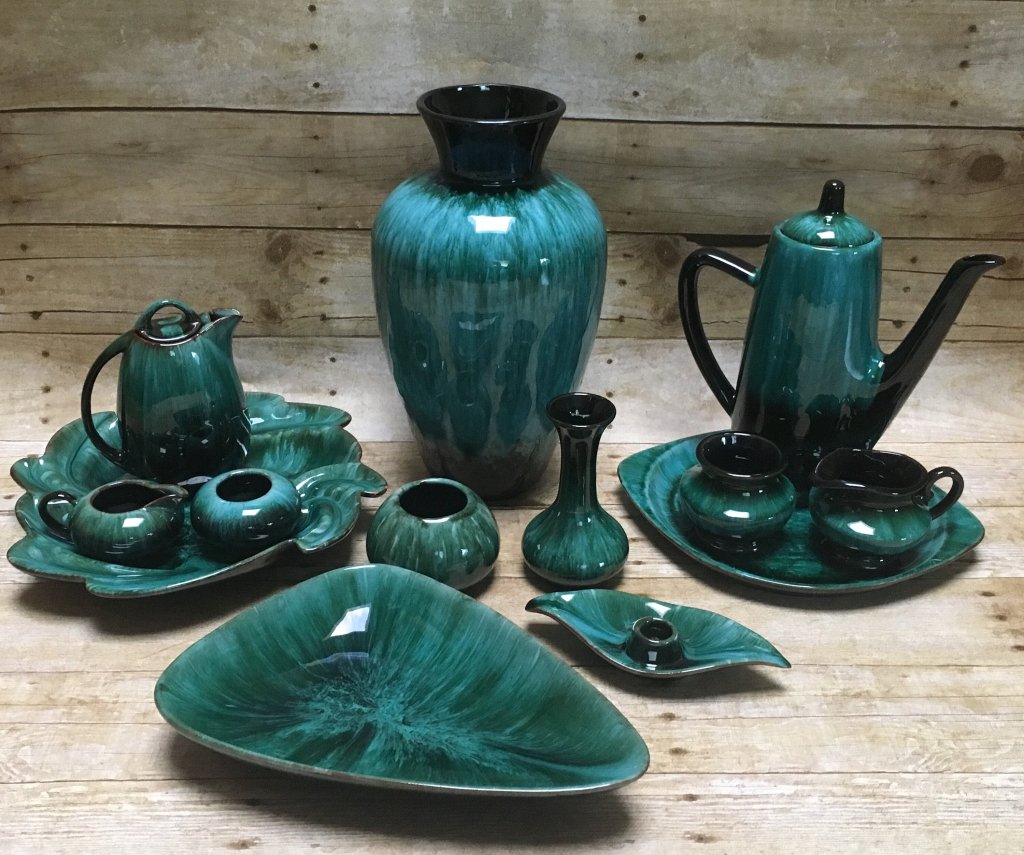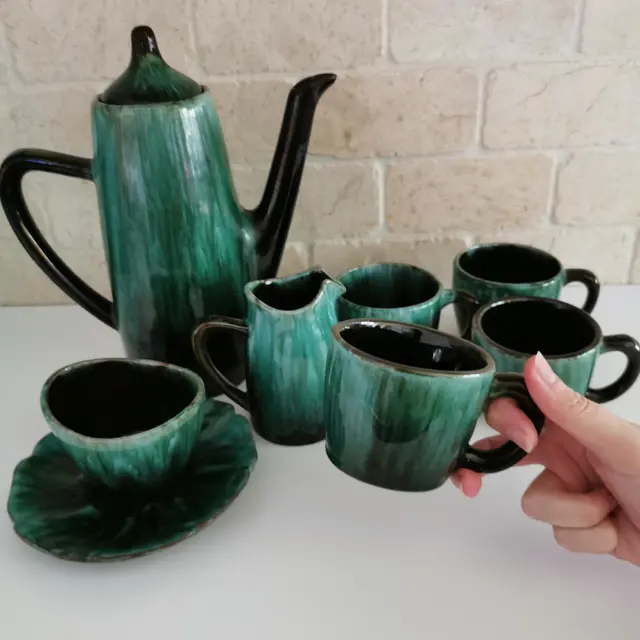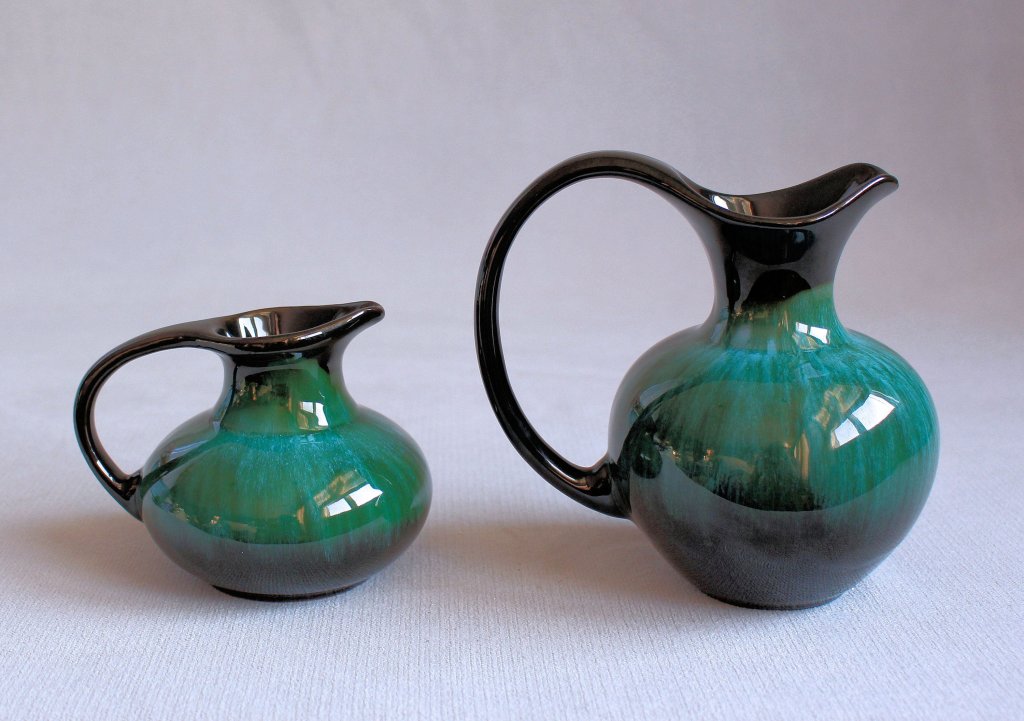Blue Mountain Pottery was a Canadian ceramics company known for its distinctive pottery products. It was popular because of its distinctive green and black glaze, unique design techniques, and an even wider range of pottery products.
Even though it was closed in 2004, BMP items remain highly collectible and are appreciated for their artistic and historical significance.
So, if you are someone who likes to collect classic pottery items, then getting your hands on Blue Mountain Pottery products will make a good addition to your pottery collection.
Keep reading to find out more about Blue Mountain Pottery.
What is Pottery?

Before we get into the history of Blue Mountain Pottery, let us first understand what pottery is and why people have a craze for it.
Pottery is a form of ceramic art and craft that involves the creation of objects, typically functional decorative, by shaping clay and then firing it at high temperatures to make it durable. Pottery has a long and rich history that spans thousands of years and is found in various cultures worldwide. Here are some key aspects of pottery:
- Clay: The primary material used in pottery is clay, a naturally occurring, fine-grained, earthy material. Different types of clay, such as earthware, stoneware, and porcelain, have varying characteristics and firing temperatures, which influence the final appearance and functionality of the pottery.
- Decoration: Pottery can be decorated in various ways. Common methods include carving, painting, glazing, and applying decorative elements like handles, spouts, or relief designs. Different cultures and periods have developed distinctive decorative styles.
- Glazes: Glazes are liquid coatings applied to pottery before the final shaping of the pottery. They serve both decorative and functional purposes. Glazes can add color, texture, and a glossy finish to pottery, as well as make it waterproof and food-safe.
- Cultural Significance: Pottery has been significant in human culture throughout history. It has been used for practical purposes such as cooking, storing, and transporting goods. It has also been a medium for artistic expression, storytelling, and religious rituals.
-
Types of Pottery:
- Earthenware: Fired at lower temperatures, earthenware pottery is known for its porous nature and warm colors. It is often used for decorative and utilitarian pieces.
- Stoneware: Stoneware is fired at higher temperatures, producing a dense, non-porous, and durable material. It is commonly used for dinnerware and kitchenware.
- Porcelain: Porcelain is a type of high-fired, white clay pottery known for its clarity and delicate appearance. It is often associated with fine china and decorative objects.
What Happened to Blue Mountain Pottery?

- Blue Mountain Pottery was founded in 1947 by Jozo Weider and his partner, Jon Zubak, in Collingwood, Ontario, Canada. Blue Mountain Pottery was famous for its trademark glaze, which featured a striking combination of green and black colors. The company’s products often displayed a “drip” or “streak” design, where the glaze appeared to cascade down the pottery’s surface, resembling mountains or flowing water.
- Although earlier glazes also included plum, blue, and rainbow, this glaze eventually became the brand’s symbol. In the 1950s, George Weider was a teenager who worked at the pottery. “Pottery developed a variegated pattern when we utilized drip glazes and high heat. Each batch responded differently; no two batches were exactly alike. The items were distinctive in their own right. That contributed to its appeal. In actuality, you were purchasing a portion of Blue Mountain.
- The Ski Barn, a multipurpose building that operated as an apple storage facility, lodge, and ski store, was no longer large enough to accommodate the manufacturing, which was moved to a building in Craigleith on Highway 26 and eventually to a factory in Collingwood.
- Over the years, Blue Mountain Pottery gained a loyal following among collectors and enthusiasts. The distinctive appearance of BMP products made them easily recognizable, and many people began to treasure and collect these pieces.
- Unfortunately, Blue Mountain Pottery faced financial challenges and market changes. The company struggled to compete with cheaper imports and changing consumer preferences. In 2004, Blue Mountain Pottery ceased production and closed its doors for good.
Despite its closure, Blue Mountain Pottery items, often restored with Non-toxic Ceramic Repair Solutions to maintain their integrity, remain popular among collectors.
Due to their unique appearance and nostalgia associated with the brand, BMP pieces can still be found in antique shops, online marketplaces, and auctions. Some rare and well-preserved items can command high prices among collectors.
Conclusion
In summary, Blue Mountain Pottery was a Canadian ceramics company known for its unique glaze and design. Still, it ultimately closed its doors in 2004 due to financial difficulties and changes in the market.
Despite its closure, BMP items remain collectible and are appreciated by enthusiasts for their distinctive style and craftsmanship. It is gathered worldwide, and the most valuable sets can be sold for thousands of dollars at auctions. It can be seen on a Canadian Postage Stamp. It is also on display at the Royal Ontario and Gardiner Museums.
If you are interested in collecting authentic pottery items, Blue Mountain Pottery should definitely be on your list of collectibles.

